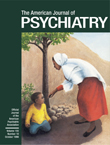Pain and Its Relief Without Addiction: Clinical Issues in the Use of Opioids and Other Analgesics
As an addiction specialist who has long worked with the dually diagnosed seriously mentally ill, I was eager beyond belief to dive into this book, as well as another book by Dr. Stimmel, Drug Abuse and Social Policy in America: The War That Must Be Won(1). I was heartened to see in Pain and Its Relief Without Addiction that Dr. Stimmel shares some of my perspectives: it is ethically contemptible to deny pain relief for fear of “creating an addict”; it is a good idea to manage psychogenic pain as if it were real. The thorough reviews of neuroanatomy and neurophysiology rival the careful progression of lectures from my medical school days, with updates. I was equally cheered to observe the author’s obvious familiarity with current controversies in theories of pain control and the role of emotion in the subjective experience of distress. In addition, the statistics provided on the low level of physician responsiveness to patient complaints of pain demonstrate beyond argument how crucial this topic is and how inadequate the medical profession’s treatment of pain is.
The strengths of the book are legion: accessible thought development, clear language presentation, comprehensive attention to general management strategies of patient pain, and guidelines of specific approaches to specialized subpopulations (children, the elderly, people with cancer, and those who are already dependent on narcotic analgesics). The clear differentiation between treatment of acute and chronic pain is vital, and the tables and descriptions of particular drugs within topical classes (barbiturates, benzodiazepines, antidepressants, nonsteroidal anti-inflammatory agents, nonopioid analgesics, marijuana) are excellent.
Dr. Stimmel’s development of explanations of tolerance and withdrawal as well as dependence and addiction (the latter pair distinct from each other by virtue of the social decompensation involved) is laudable. Equally valuable are the discussions of pain management protocols, including establishing a solid and trusting relationship with the patient, identifying the source(s) of the pain reported, maintaining awareness of tolerance and dependence, and giving each medication a full trial at a reasonable dose.
Several disadvantages struck me, however. First, the depth to which all the basic science is plumbed may be excessive for an ostensibly clinical volume (although each chapter and section can stand apart—and thus need not be read completely). Second, despite the commendable organization of the entire volume, several essential questions—to my practice at least—remain unanswered. First, what is the role of nonphysician healers (physical therapists, nurses, massage therapists, naturopaths, homeopaths) and unlicensed healers (acupuncturists, biofeedback practitioners) and their modalities (biofeedback, imagery, meditation, and relaxation, briefly mentioned on page 282)? Why are drugs that bear other, more correct, designations (neuroleptics, antipsychotics) still referred to with the antiquated title of “major tranquilizers”? Why is there so little analysis of methadone as a narcotic analgesic?
Finally, my single biggest unresolved issue is what to do with patients who are addicts and who experience physical, treatable pain. The strictest addiction program wisdom suggests avoiding every known addictive substance in someone known to be addicted to or in recovery from addiction to any substance of addiction, even if the drug being considered is neither in the same biochemical grouping nor known to engage with the same receptors as the drug to which the person’s system is sensitive.
All in all, the scope and breadth of Pain and Its Relief Without Addiction are awesome, inspiring, and pragmatically applicable. I heartily recommend it—and its fine companion instructor’s manual—for perusing, refreshing, and applying newly expressed, if not newly forged, ideas.
1. Stimmel B: Drug Abuse and Social Policy in America: The War That Must Be Won. New York, Haworth Medical Press (Haworth Press), 1996Google Scholar



